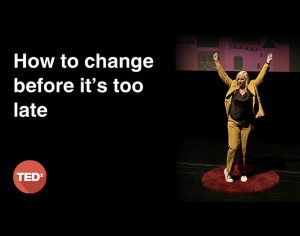Barbara Beskind is 91 and defies every age-based stereotype there is. The American former occupational therapist has been a designer for eight decades and still works part-time for cult design house IDEO. These days she’s thinking about how to produce something wearable to help minimise the chances of her and her friends falling and breaking their hips and has already created her own walking sticks that look more like ski poles.
Beskind’s combination of age and business ambition might be unusual but she’s far from alone. So-called olderpreneurs are a growth market: recent research by Barclays uncovered that in the UK the number of startups founded by over-65s has risen by 140% in the last decade. Separately, research in 2015 by the Kauffman Foundation found almost a quarter of American entrepreneurs are now aged over 55, compared to just 15% in 1996. It is no wonder that the recent UN International Day of Older Persons that took place on October 1 was subtitled ‘Tapping the talents of participation of older persons’, given there’s so much talent there to tap.
But there’s an odd anomaly at work here. The demographics clearly show just how influential the older generation is, in terms of both numbers and spending. By 2030, the number of people across the world aged over 60 will rise a whopping 56% to 1.4bn, exceeding the number of 15- to 24-year-olds. In the UK, it’s obvious to anyone with only a passing interest in the property market that, in the main, older people possess vastly higher cash reserves than their children and grandchildren. Their spending has risen by 4.4% annually for every year of the past decade, quadruple the level seen by younger age groups.
Despite this booming market, the practice of designing products and services to cater for this older audience is still only a niche activity. While there is a massive opportunity here for brands to show they are thinking about the needs of older consumers, many feel that brands fail to even try to earn their attention. Research by insurance company Sun Life, for example, found that 89% of the over-50s think that brands aren’t interested in them.
And who can blame them? Car ads uniformly feature perky millennials, despite the fact that 60% of cars are bought by the over-50s. Packaging giant Tetra Pak recognised the need to innovate for an older demographic and conducted significant research into how it can design FMCG packaging to cater for this audience. The company explored how it could make jars, cans, bottles and cartons that are both easy to open and simple to understand. It looked at which shapes of containers are simple to hold and researched putting better seals onto packaging so that food can be kept for longer, reducing the number of trips to the shops.
But this type of activity is still fairly unique. Dr Alaster Yoxall is a Sheffield Hallam University researcher who specialises in the creation of packaging suitable for older people. His research found that 20% of this age group will switch brands rather than struggle to open a carton or bottle. His attempt to kickstart progress in this area is a project auditing packs for all products bought by NHS Trusts. It must be possible for each piece to be opened by an older person or it must be redesigned. So far Premier Foods, Juiceworks and The Good Food Chain have joined the scheme.
It seems that much of the best practice in this area is initiated by public bodies, rather than the commercial sector. INCLUSilver is a scheme supported by the EU Horizon 2020 program – it gives out financial subsidies to SMEs across nine EU countries that are designing personalised nutrition products and services for the elderly. It’s an excellent idea but why should it take a public organisation to invest in this area?
In fact, with increasing numbers of olderpreneurs building businesses, it’s important to recognise the value entrepreneurs can bring when they innovate on a topic that is personally relevant to them. American kitchen tool company OXO, for example, was founded by Sam Farber after he created a special vegetable peeler for his wife, who had arthritis. This shows how some of the best products are created by those who can personally relate to the problem that they are trying to solve.
It is also the case that many older people are now turning to self-employment, some as a way of having control over their working hours and others because they find it difficult to secure employed positions. In Australia, older entrepreneurs are the fastest growing sector of new business owners, comprising 35%. They often have savings behind them to more readily support a startup compared with their younger counterparts and also benefit from having a diversity of contacts to support them.
The next few years will see a swift growth in the numbers of older people who use their entrepreneurial energy to create products that make life easier for them and their friends. What could prove fascinating is how this generation works with their younger peers in the corporate world to bring their products to a wider market. ![]()
Share via:


















































